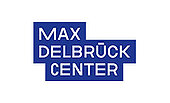Spacer-nick genome editing of hematopoietic stem and progenitor cells and T cells
Keywords
CRISPR Cas, nickase, HSPC, T cell, sickle cell anemia, beta-thalassemia, SCID, severe congenital neutropenia
Invention Novelty
A novel method to correct a broad range of mutations in human hematopoietic stem and progenitor cells (HSPC) and T cells is provided. The method features an improved safety profile and high correction efficiency.
Value Proposition
Inherited hematological disorders such as sickle cell anemia, beta-thalassemia or SCID are genetic diseases caused by mutations that adversely affect the development or function of different types of blood cells. CRISPR/Cas gene editing holds the promise to provide curative therapies but safety issues caused by frequent indel formation are still prominent, especially when applied in HSPC. Although the application of a Cas9 nickase (Cas9n) with two single guide-RNA’s (sgRNA) binding close to each other has been shown to reduce off-target effects significantly, on-target effects caused by formation of indels resulting from non-homologous end joining (NHEJ) are still frequent. In addition, disease-causing genetic mutations are quite diverse, and each mutation must be addressed by specific guide-RNA’s. Spacer-nick is a novel and efficient method for gene editing in HSPC and T cells with an excellent safety profile. It is a universal method enabling the correction of diverse mutations within a broad genomic range with minimum on-target and off-target toxicity.
Technology Description
The Spacer-nick method combines the use of Cas9n with a pair of specific sgRNA binding to the targeted DNA within a rather long distance to each other. Cas9n cuts only one strand of DNA and Spacer-nick creates two cuts opposite to each other within a spacer distance of > 200 bps. With a DNA donor template, a corrected DNA stretch is inserted between the two cuts via homology-directed repair (HDR). Spacer-nick was validated in HSPC and T cells to repair known mutations at the HBB, ELANE, IL7R and PRF1 loci that cause severe beta-thalassemia, severe congenital neutropenia, severe combined immune deficiency and familial hemophagocytic lymphohistiocytosis. As an example, with one pair of optimized sgRNA’s Spacer-nick can correct about 80% of known mutations in the HBB gene. While correction efficiency is comparable to the classical CRISPR/Cas9 system, undesirable on-target NHEJ events are significantly reduced from 60 % to 1.3 %. Hence, Spacer-nick is an efficient and safer alternative to conventional CRISPR/Cas9-based gene correction in HSPC and T cells.
Commercial Opportunity
Available for licensing
Development Status
in-vitro
Patent Situation
EP patent application EP21192657.1 with priority of 23.08.2021





